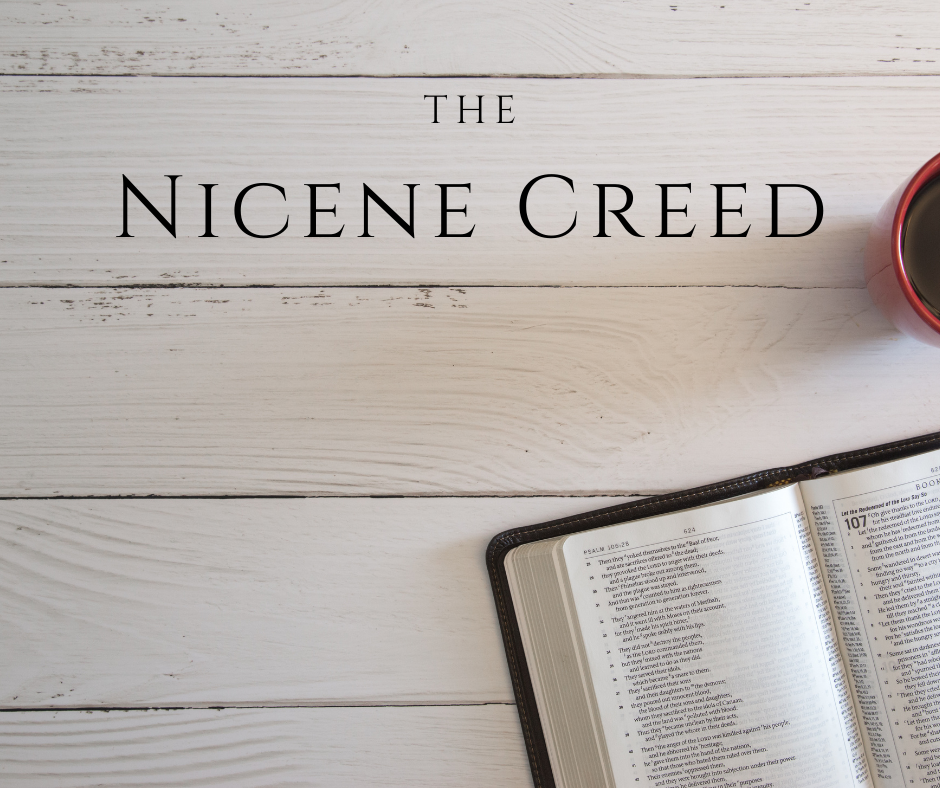God from God
The next line in the creed is “God from God, Light from Light, true God from true God.” This line addresses one of the teachings of Arius. Arius taught that God the Father was eternal, and Jesus was the firstborn of creation (created). Jesus was like God, but not God. The major term he used was ‘homoiousios,’ which means a similar substance. However, the term ‘homoousios’ means the same substance. We will talk about this more when we get to
Begotten from the Father before all ages
Last week we looked at heresies and errors in how Jesus is the Son of God. Most of these heresies or errors came from not understanding the doctrine of eternal generation. The doctrine of the Trinity is hard for us (fallen and finite creatures) to grasp. When speaking of the uniqueness of the Son as the second person of the Trinity, not the Father and not the Spirit, we talk about his eternal generation, that is, the Father begetting the
The only Son of God
Today we come to a new line of the Nicene Creed. We are still discussing Jesus Christ (it is about 58% of the creed). The line is "The only Son of God." This week we look at an issue that has come up frequently in history. Three significant heresies that have been taught regarding the sonship of Jesus are 1) Adoptionism, 2) Islamic understanding of the Son, and 3) Eternal subordination of the Son. Due to the length of this,
One Lord Jesus CHRIST
This week we will finish looking at the Nicene Creed line, which says, “And in one Lord Jesus Christ.” We have seen the exclusiveness that there is only one way of Salvation. We have seen the title Lord given to Jesus and the prophetic name of Jesus as the savior of our sins. This week we look at the name Christ. Christ is not Jesus’s last name but speaks again of who Jesus is. Like the name Jesus, it is
One Lord JESUS Christ
We are continuing to look at the Nicene Creed and particularly the line, ‘And in one Lord Jesus Christ.’ We have seen the exclusiveness of the Gospel, which says there is one way of salvation. Last week we looked at the title Lord given to Christ. This week we will look at the name Jesus. Jesus, to us, is a very particular name that we know who we are talking about. We are talking about Jesus Christ, the second person
One LORD Jesus Christ
Last week we looked at the exclusiveness of Christianity that Jesus is the only way. Over the coming weeks, we will continue on the same line of the creed, but we will be looking at the titles given to the second person of the Trinity, Jesus. The first one is the Lord. The word for Lord is Kyrios in Greek, which appears over 700 times. Lord is a title we do not use much in today’s vocabulary. It can have
ONE Lord Jesus Christ
This week we look at the second person of the Trinity, Jesus Christ. The opening section is about 9% of the Creed, whereas the ‘Christological’ section is about 58% of the Creed. The ecumenical council that met at Nicaea (325 AD) was to address the issue of Christ’s relationship to the Father. There were significant heresies that were arising around in that period where notably Arianism, Apollinarianism, Macedonianism (also called Pneumatomachianism), and Chiliasm. All of which says Christ became God
Father Almighty
The second line of the Nicene Creed is that we believe in the Father almighty. The Trinity is no difficult to say or even understand we believe there is but One only, the living and true God. The one true and living God There are three persons in the Godhead; the Father, the Son, and the Holy Ghost; and these three are one God, the same in substance, equal in power and glory (WSC 4-5). When we use earthly examples
We believe in one God
As we continue to look at the Nicene Creed, it is important to notice the first word of the creed, 'We.' One of the great benefits of professing a creed is the summary of Christian doctrines as revealed in the Scriptures. Also, these truths have been confirmed and said by the saints throughout the ages. In a post-modernist world, where the mantra phrase might be, you can have your truth, and I will have my truth, which focuses on the
Nicene creed
We are looking at the Nicaeno-Constantinopolitan Creed or Nicene creed. The creed was originally written in 325 AD but later expanded in Constantinople in 381 AD. The expanded section dealt with the Holy Spirit. The original creed was written at the council of Nicaea (present day Iznik, Turkey), hence why we call it the Nicaean Creed. In 324 AD the Roman empire was united again under Constantine, who was a recent convert to Christianity. The council of Nicaea was the




